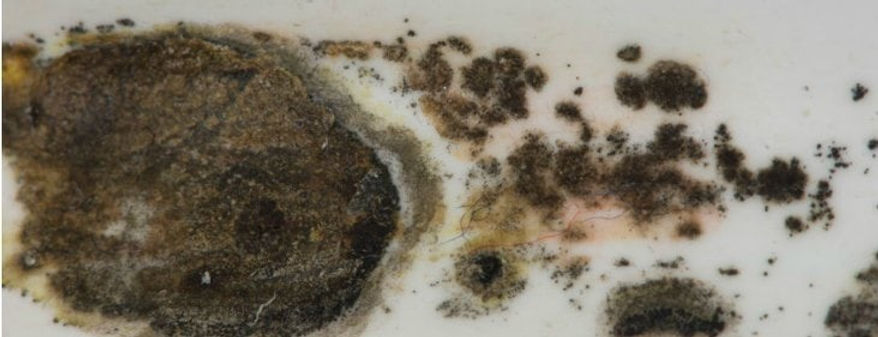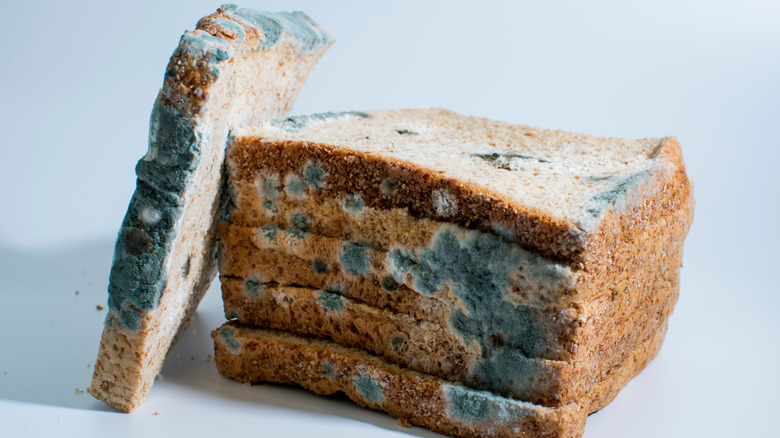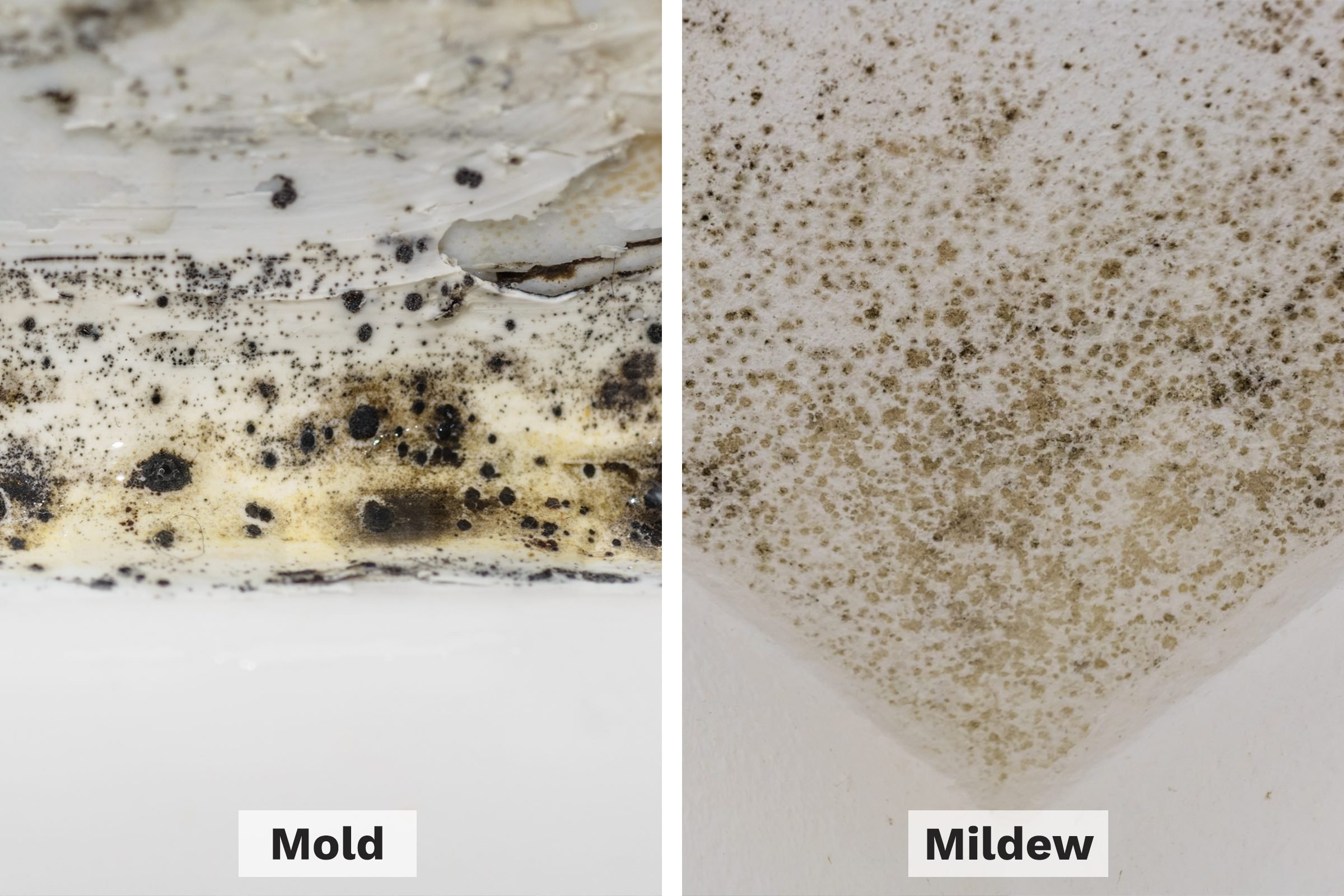
What Is Black Mold?
Black mold refers to Stachybotrys chartarum, a type of mold that is black or dark green in color and grows in areas with excessive moisture. Black mold tends to thrive in places with prolonged water damage or high humidity, such as basements, bathrooms, and behind walls. This type of mold is particularly concerning because it can release toxic spores known as mycotoxins, which can lead to a variety of health issues, especially in individuals with respiratory problems, allergies, or weakened immune systems.
For more detailed information on black mold, visit the CDC’s black mold guide.

What Is Regular Mold?
Regular mold refers to other common types of mold found in homes, such as Aspergillus, Penicillium, and Cladosporium. These molds can vary in color, including green, white, blue, or yellow, and are often found in damp areas like kitchens, bathrooms, and basements. While these types of mold are usually less toxic than black mold, they can still cause health problems if not addressed, particularly for individuals with mold allergies or respiratory issues.
Regular mold is generally easier to clean than black mold, but it’s still important to remove it promptly to prevent it from spreading. If you notice signs of mold growth, it’s important to act quickly before it becomes a bigger problem.
Key Differences Between Black Mold and Regular Mold
Black mold vs. regular mold: While all mold needs moisture to grow, black mold differs from other types of mold in several ways. Understanding these differences can help you determine how to handle a mold problem in your home.
1. Appearance

Black mold: As the name suggests, black mold is typically black or dark green in color. It often appears as slimy or wet and tends to grow in larger patches. Black mold usually has a dark, concentrated color, making it more noticeable than other types of mold.
Regular mold: Regular mold can be a variety of colors, including green, white, yellow, blue, or brown. Unlike black mold, regular mold often appears powdery or fuzzy and may spread in small clusters or spots across surfaces.
2. Texture
Black mold: Black mold has a slimy texture, especially when it’s actively growing. It can feel wet to the touch and may appear shiny on the surface where it’s growing. This texture can make black mold more difficult to clean.
Regular mold: Regular mold is usually dry and powdery or fuzzy. It tends to grow on the surface of materials and can be scrubbed off more easily than black mold. However, regular mold can still penetrate porous materials like wood or drywall.
3. Location
Black mold: Black mold thrives in areas that have been exposed to moisture for a long time, such as after water damage or in rooms with high humidity. Common locations include basements, behind walls, and around leaky pipes or windows.
Regular mold: Regular mold can grow in any area that is damp or humid but typically shows up in less severe moisture conditions, such as bathrooms, kitchens, or around windows. It can also grow on food, such as bread or fruit, which is why it’s important to store perishable items properly.
4. Health Risks
Black mold: Black mold is known for producing mycotoxins, which can lead to more severe health risks. Prolonged exposure to black mold can cause symptoms such as coughing, wheezing, headaches, and skin irritation. In more serious cases, it can lead to respiratory infections or neurological problems, particularly in individuals with weakened immune systems.
Regular mold: Regular mold can still cause health problems, especially for people with mold allergies or asthma. Common symptoms include sneezing, nasal congestion, skin irritation, and eye discomfort. While regular mold is generally less toxic than black mold, it’s important to remove it promptly to avoid long-term exposure.
Is Black Mold More Dangerous Than Regular Mold?

Black mold is generally considered more dangerous than regular mold due to the mycotoxins it produces. These toxins can cause more severe health issues, particularly with long-term exposure. However, it’s important to note that all types of mold can negatively impact your health and should be removed as soon as possible.
If you’re unsure whether the mold in your home is black mold or regular mold, it’s best to contact a professional mold remediation company like Citywide Mold Mitigation for an inspection. Professionals can identify the type of mold present and provide the safest and most effective removal methods.
How to Identify Black Mold vs. Regular Mold
If you’re trying to determine whether you have black mold or regular mold in your home, here are some key signs to look for:
| Characteristic | Black Mold | Regular Mold |
|---|---|---|
| Color | Dark black or greenish-black | Green, white, yellow, blue, brown |
| Texture | Slimy, wet | Powdery, fuzzy |
| Location | Areas with severe moisture issues (e.g., basements, behind walls, around pipes) | Bathrooms, kitchens, windowsills, food |
| Health Risks | Produces mycotoxins, more serious respiratory and neurological effects | Causes allergic reactions, asthma symptoms |
When to Call a Professional for Mold Removal

Whether you’re dealing with black mold or regular mold, it’s important to address the problem quickly. If the mold is covering a large area (more than 10 square feet), is growing in hidden areas like behind walls, or if you’re experiencing health issues, it’s time to call in a professional mold remediation company.
- Extensive mold growth: Large mold infestations should be handled by professionals to prevent the mold from spreading and ensure safe removal.
- Health concerns: If you or your family members are experiencing symptoms like coughing, wheezing, or allergic reactions, a professional can safely remove the mold and reduce the risk of further health problems.
- Water damage: Mold growth caused by water damage should be addressed by professionals who can fix the source of the moisture and remove the mold.
If you’re unsure how to handle mold in your home, Citywide Mold Mitigation offers expert mold inspection, removal, and prevention services to help keep your home safe and healthy.
FAQ
| Question | Answer |
|---|---|
| Is black mold more dangerous than regular mold? | Yes, black mold is generally more dangerous because it produces mycotoxins that can lead to more severe health issues. However, all mold can negatively affect your health, especially if you have allergies or asthma. |
| What are the common signs of black mold? | Black mold is dark black or green in color, slimy in texture, and often grows in areas with severe moisture problems, such as basements, bathrooms, or behind walls. |
| Can regular mold still be harmful? | Yes, regular mold can still cause health problems like allergic reactions, asthma symptoms, and respiratory issues. It’s important to remove all types of mold as soon as they are discovered. |
| When should I call a professional for mold removal? | If mold covers a large area, is growing in hidden spots, or is causing health issues, it’s best to call a professional mold remediation company like Citywide Mold Mitigation for safe removal. |
| How can I prevent mold from growing in my home? | To prevent mold, keep humidity levels low, fix leaks immediately, improve ventilation in damp areas, and clean regularly. Use dehumidifiers in basements and bathrooms to reduce moisture levels. |
If you need expert mold removal services, contact Citywide Mold Mitigation today to ensure your home is mold-free and safe.

